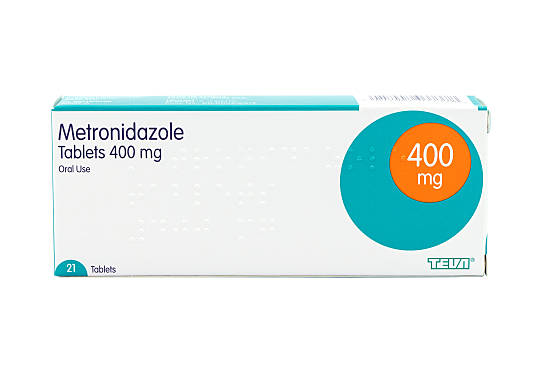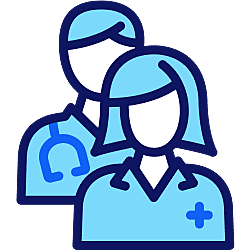Trichomoniasis Treatment
Get trichomoniasis treatment online with free and fast delivery.
Prices from £13.00
Simply fill in a brief consultation questionnaire and one of our doctors will review your request today.
Trichomoniasis is a disease caused by a parasite, which spreads between people during sex. It’s not always easy to tell when you have symptoms of Trichomoniasis, but once your doctor has diagnosed you with it, then you should consider treatment based on their advice.
At ZAVA, we offer two dosages of metronidazole, which is the most common treatment.
Trichomoniasis is also called ‘trichomonas’, or sometimes just ‘trich’.
Please note: where a generic product has been ordered we may use a range of manufacturers to provide you with your medication, in order to maintain our service levels.

In stock. Prices from £13.00

No results found.
Please check your spelling or try another treatment name.



About trichomoniasis treatment
Who can get treatment online
Usually, to be able to get treatment online, you should have been:
- diagnosed with having trichomoniasis by a doctor
- told that your sexual partner has been diagnosed with trichomoniasis by a doctor
How to get your treatment
Requesting metronidazole treatment is a simple and convenient process:
- Fill out a short online assessment
- One of the doctors at ZAVA will check your assessment answers to see if the treatment is right for you
- If your request is right for you, then it can be posted to your preferred address, or you can collect it from a local Post Office instead
Common side effects of trichomoniasis treatment
At ZAVA, we offer metronidazole for trichomoniasis. Its side effects can be:
- feeling sick
- diarrhoea or vomiting
- a metallic taste in your mouth, or a furry feeling on your tongue
- headache/head pain
- stomach cramps
- heartburn
- constipation
-
-
Trichomoniasis is a sexually transmitted disease (STD) caused by a small parasite. It mostly affects the urethra (the tube that carries urine out of the body) or vagina. It is also possible for the head of the penis or prostate gland to become infected too.
Trichomoniasis is the most common curable STD. Most of the time, it isn’t serious and can be treated and cured. You should just keep in mind that if you don’t get treatment, then it can last for months or even years.
-
-
Roughly 70% of infected people don’t have any signs or symptoms of trichomoniasis but they can still pass the infection on to others during this time.
When it does cause symptoms, they can be hard to spot.
Symptoms can range from mild irritation to severe inflammation. Some people with symptoms get them within 5 to 28 days after getting the infection. Others do not develop symptoms until much later. Symptoms can also come and go.
Common symptoms
People don’t always experience symptoms. But they can include:
- abnormal frothy discharge from the vagina: it can be thin and scanty or thick and large amounts. It can be yellow/greenish/grey, with a strong smell
- itching/burning near the vagina
- more frequent or painful urination
- lower abdominal discomfort
- white discharge from the penis
- pain/burning when you ejaculate
- pain during sex
-
-
Trichomoniasis is caused by a parasite, which can be spread by unprotected sex (without a condom) or unsafe sexual activity – for example, sharing sex toys that haven’t been washed or been covered with a condom before being used.
You don't have to have a lot of sexual partners to catch trichomoniasis. Anyone who is sexually active can catch it and pass it on.
Trichomoniasis is usually spread by sexual contact between the genitalia and is not commonly found in other areas, like the hands, mouth, or anus. Trichomoniasis isn't thought to be passed on through oral or anal sex.
-
-
Metronidazole can be taken in two different dosages to treat trichomoniasis. Both are available through ZAVA.
The dosages are:
- 400mg, which is taken twice a day for 7 days
- 2g (2000mg), which is taken altogether as a single dose at one time
If you take the 2g (2000mg) dosage, any side effects you experience will be much stronger since the dosage is higher. However you will only need to take this once, rather than over 7 days.
The most common alternative treatment for trichomoniasis is tinidazole. Both metronidazole and tinidazole are equally effective at treating trichomoniasis.
-
-
Like every medication, metronidazole can cause some side effects. Not everyone experiences these, but you should be on the lookout for them.
Common side effects:
- Diarrhoea
- Feeling like throwing up
- Headache or head pain
- Feeling less hungry
- Stomach cramps
- Constipation
- Metallic taste or furry feeling on your tongue
- Heartburn (indigestion)
Serious side effects
If you have any of these serious side effects, then you should call your doctor or emergency services immediately:
- Yellowing of your skin and the whites of your eyes. These can be warning signs of issues in your liver or gallbladder
- Unexpected infections, mouth ulcers, bruising, bleeding gums, or extreme tiredness. These can be caused by a blood problem
- Bad stomach pains that could also affect your back – this can be a sign of pancreatitis
- Blurred/double vision
- Fever, stiff neck, hallucinating, feeling confused, struggling with bright light, finding it difficult to speak - these can be signs that metronidazole is affecting your brain
-
-
No, you shouldn’t drink alcohol while you’re taking metronidazole. And after your treatment has finished, you should wait for about 2 days before drinking alcohol again.
Alcohol can give you severe side effects such as:
- Feeling sick
- Vomiting
- Stomach pain
- Hot flushes
- Pounding heartbeat
- Headache
-
-
Trichomoniasis is unlikely to go away without treatment, which is why you’ll normally be prescribed antibiotics for it. Most people are treated with an antibiotic called metronidazole.
Any sexual partners you’ve had in the last 4 weeks should also be treated for trichomonas. It is recommended that if you have possible Trichomonas that you do not have any sexual contact until after you have completed your course of treatment and the infection has cleared up. If you have sex with or without a condom during the time you are on treatment, you will likely need to have treatment again. It is also important to contact any previous partners and current sexual partners to let them know that they may have Trichomonas so that they can receive treatment.
Getting treated for trichomoniasis is a good idea to:
- stop it being passed on to anyone you have sex with
- reduce your risk of getting or spreading other sexually transmitted infections, as trichomoniasis can make this more likely
- stop any unpleasant symptoms you may be having which may be impacting your daily life
- improve your sex life, as having these symptoms may make it uncomfortable and affect your self-esteem
- prevent complications during pregnancy, such as having your baby too early, having a baby with a lower birth weight, and passing the infection to them

Dr Kathryn Basford is a qualified GP who works as a GP in London, as well as with ZAVA. She graduated from the University of Manchester and completed her GP training through Whipps Cross Hospital in London.
Meet our doctorsLast reviewed: 19 Mar 2020
-
American Family Physician (2009). Tinidazole (Tindamax) for trichomoniasis and bacterial caginosis. [online] Available at: https://www.aafp.org/afp/2009/0115/p102.html [accessed 30th October 2018].
-
CDC (2017). Trichomoniasis - CDC fact sheet. CDC. [online] Available at: https://stacks.cdc.gov/view/cdc/30965 [accessed 30th October 2018].
-
Cleveland Clinic (2017). Trichomoniasis. [online] Available at: https://my.clevelandclinic.org/health/diseases/4696-trichomoniasis [accessed 30th October 2018].
-
Mayoclinic (2018). Trichomoniasis. [online] Available at: https://www.mayoclinic.org/diseases-conditions/trichomoniasis/symptoms-causes/syc-20378609 [accessed 30th October 2018].
-
National Institute for Health and Care Excellence (2018). Metronidazole. [online] Available at: https://bnf.nice.org.uk/drug/metronidazole.html [accessed 30th October 2018].





